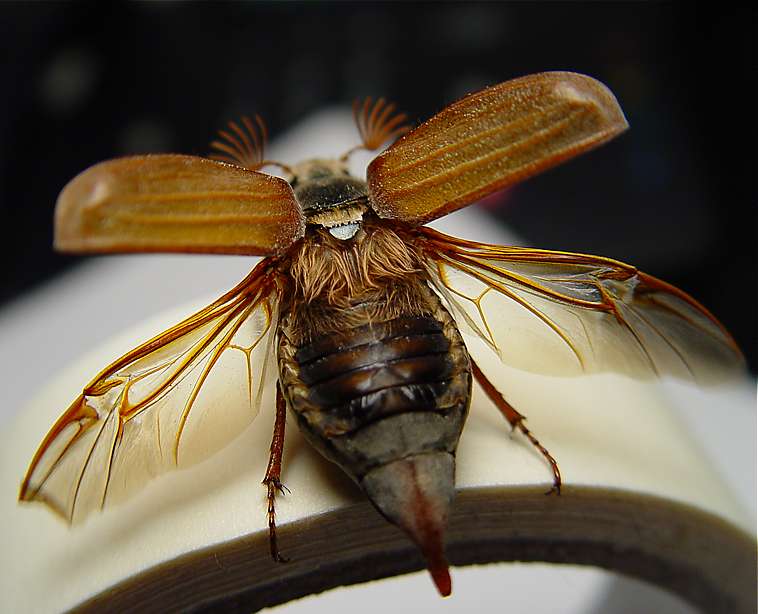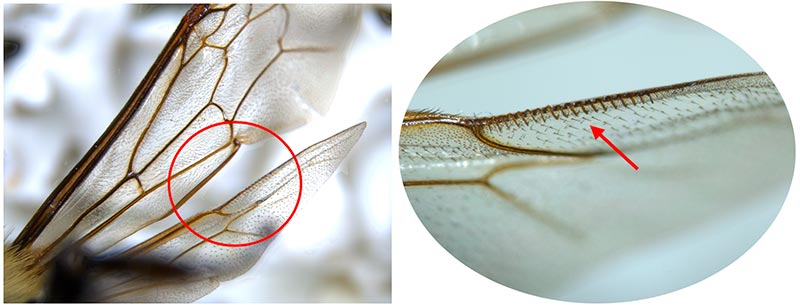Wing adaptations and modifications
a) Elytra:
- hard, sclerotized front wings that serve as protective covers for membranous hind wings.
- Eg: Coleoptera and Dermaptera

b) Hemelytra:
- front wings that are leathery or parchment-like at the base and membranous near the tip.
- Eg: Hemiptera: Heteroptera ( true bugs)

c) Tegmina:
- front wings that are completely leathery or parchment-like in texture.
- Eg: Orthoptera, Blattodea, and Mantodea.

d) Halteres :
- small, club-like hind wings that serve as gyroscopic stabilizers during flight.
- Eg: Diptera

e) Fringed wings:
- slender front and hind wings with long fringes of hair.
- Eg: Thysanoptera

f) Membranous:
- Both fore- and hind wings are thin, firm and more or less transparent.
- Example: Odonata (dragonflies)

g) Scaly wings :
- front and hind wings covered with flattened setae (scales)
- Eg: Lepidoptera

h) Hamuli:
- tiny hooks on hind wing that hold front and hind wings together.
- Eg: Hymenoptera

I) Stigma:
- Thickened opaque spot along the costal margin of equal sized, net veined, membranous wings.
- Example: dragonflies and damselflies